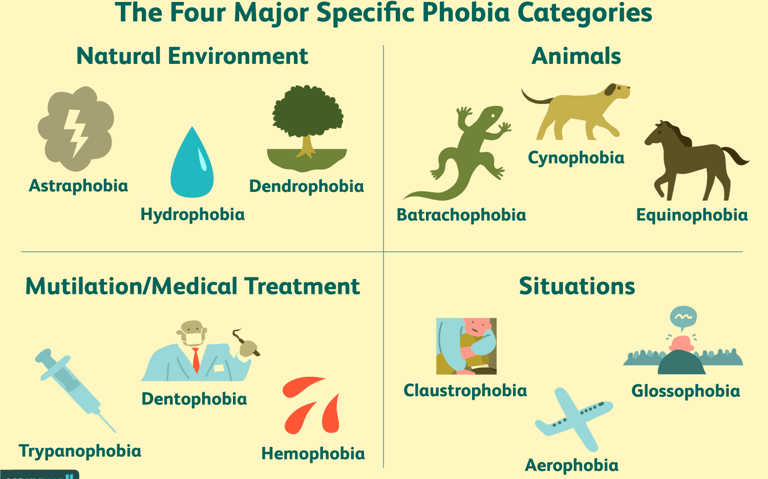Episode 113: Understanding Phobias Part 1 - An Overview
8/8/20242 min read


Hey, I'm Sam!
Hi, I'm Amber! And we're the Crude Twins!
Welcome to our chaos!
Welcome back, Crude Twins fam! We're so glad you're here and if you're new, welcome! We're so happy you're here as well.
Today's episode is about the research of phobias. This is Part 1, and next week will be Part 2 of phobias. A phobia is an anxiety disorder where one has an excessive amount of fear about a certain object or situation. They are usually present for six months or more. One may experience symptoms such as fainting or panic attacks if the phobia cannot be avoided. Phobias are divided into different categories.
What is a Phobia?
A phobia is a type of anxiety disorder characterized by an irrational and excessive fear of an object or situation. Unlike regular fear, a phobia persists over a long period, generally six months or more, and causes significant distress or impairment in social, occupational, or other important areas of functioning.
Individuals with phobias usually experience sudden onset of fear or anxiety when exposed to the phobic stimulus, leading to various physical and psychological symptoms. These can range from mild discomfort to severe panic attacks, including symptoms like dizziness, shortness of breath, and even fainting.
Types of Phobias
Phobias are categorized into three main types:
- Specific Phobias: This is the most common type and involves an intense, irrational fear of a specific object or situation. Examples include fear of flying, heights, animals, or injections.
- Social Phobia (Social Anxiety Disorder): This involves a significant fear of social situations where one might be exposed to scrutiny and potential embarrassment. It often leads to avoidance of social interactions.
- Agoraphobia: This includes the fear of being in situations where escape might be difficult or help unavailable, often resulting in the avoidance of public places or leaving home altogether.
Symptoms and Diagnosis
The symptoms of phobias can vary widely depending on the type and severity, but they commonly include the following:
- Intense fear or anxiety when exposed to the phobic stimulus
- Physical symptoms like sweating, trembling, rapid heartbeat, and difficulty breathing
- Panic attacks in severe cases
- Avoidance of the feared object or situation, sometimes to a very disrupting extent
Diagnosis usually involves a thorough clinical assessment by a mental health professional, who may use structured interviews and diagnostic questionnaires to determine the presence and specifics of the phobia.
Conclusion
Today’s episode has provided an introduction to the complex world of phobias, including their types, symptoms, and diagnosis. Understanding these elements lays the groundwork for more in-depth discussions on treatment and management in our next episode. Stay tuned for Part 2 as we delve deeper into how to cope with and overcome phobias, featuring insights from experts and real-life case studies.
Remember, knowledge is power, and the more we understand our fears, the better we can manage them. Thank you for joining us, and we look forward to exploring more about phobias with you next week!
